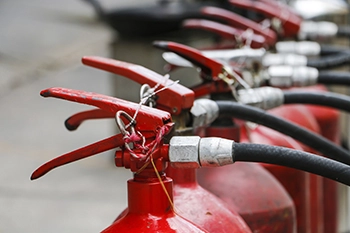Preparing for a fire safety inspection may seem daunting, but with the right checks in place, it can be a smooth, straightforward process. Whether you’re a landlord, letting agent, or business owner, using a clear fire safety checklist ensures you stay compliant with UK regulations and keep everyone in the building protected.
This guide will walk you through what to check before your inspection and why each item matters.
Failing a fire safety inspection can lead to legal action, fines, or loss of licensing. More importantly, it puts people at risk. Preparing for an inspection shows that you’re taking your responsibilities seriously. It also helps ensure that any hazards are resolved before they become a real danger.
Use this checklist to prepare your property for an upcoming fire safety inspection. Each point has a direct impact on the safety of occupants and the outcome of your inspection:
Even well-managed buildings can fail fire inspections due to common oversights. One of the most frequent is assuming that annual maintenance alone is enough to pass. In reality, daily practices and tenant behaviour play a significant role.
Neglecting to regularly test alarm systems or update documentation, storing flammable materials near exits, or wedging open fire doors can all result in inspection failures. These issues are easy to overlook but can carry serious consequences.
Keeping a short internal checklist for weekly or monthly walk-throughs can help identify these mistakes early. Small efforts made consistently are often what keep a property compliant in the long term.
Landlords often fail inspections due to overlooked details. Fire doors that don’t shut fully, blocked escape routes, or expired extinguisher servicing dates are among the most common problems. Likewise, missing documentation can be a red flag for inspectors, even if the physical safety measures are in place.
Good communication is essential when preparing for an inspection. Inform tenants, employees, or residents of what to expect and how they can help maintain a safe environment. This includes not obstructing exits, reporting hazards, and understanding the building’s fire safety procedures.
Encourage residents or staff to report any broken alarms, faulty lights, or blocked escape routes in advance. Clear communication can help resolve minor issues before they are highlighted by the inspector, showing that you are proactive and responsible as a property manager.
It helps to let tenants, staff, or occupants know when the inspection will happen. Remind them not to block exits or tamper with equipment. If there’s a shared fire procedure, ensure it is communicated and available for reference.
If you’re unsure whether your property meets fire safety standards, it’s wise to arrange a professional assessment before the official inspection. This can highlight any issues early and help you avoid non-compliance.
You can learn more about our services on our Fire Risk Assessment page or request a quote to speak with one of our assessors.
Understanding what fire safety inspectors prioritise can give you a big advantage during the preparation process. They typically focus on areas where risk is highest and where previous inspections have flagged concerns. Expect close attention to alarm testing logs, the condition and function of fire doors, and the accessibility of escape routes.
Inspectors may also speak to staff or tenants to confirm whether they understand fire procedures. If your occupants know what to do and where to go in an emergency, it reflects well on your management approach. Ultimately, the more confidently you can demonstrate your commitment to safety, the smoother the inspection will go.
Beyond physical checks and paperwork, your attitude toward safety matters. Be present for the inspection if possible, and provide any documentation the inspector requests without delay. Having an open and helpful approach shows professionalism and can build a good rapport with local authorities.
Consider walking the inspector through recent safety improvements, upgrades to alarms, or repairs you’ve made. This not only demonstrates compliance but can also show that you’re committed to continually improving the safety of your building.
If you’re managing multiple properties, keep a centralised system for scheduling checks, storing records, and tracking any follow-up tasks. It’s a simple step that ensures you’re always prepared, even if an inspection is on short notice.
Preparing for a fire safety inspection doesn’t have to be complicated. With a reliable fire safety checklist in place, you can reduce risk, avoid penalties, and demonstrate your commitment to compliance. Stay proactive, stay informed, and if you need help, contact our team for expert advice.

The Complete Fire Extinguisher Maintenance Guide for Landlords, HMO Owners, and Businesses Fire extinguishers save lives - but only if they are properly maintained. Whether...

Understanding Fire Safety at Home Fire safety isn’t just a concern for landlords and business owners. Every home, whether rented or privately owned, needs the...